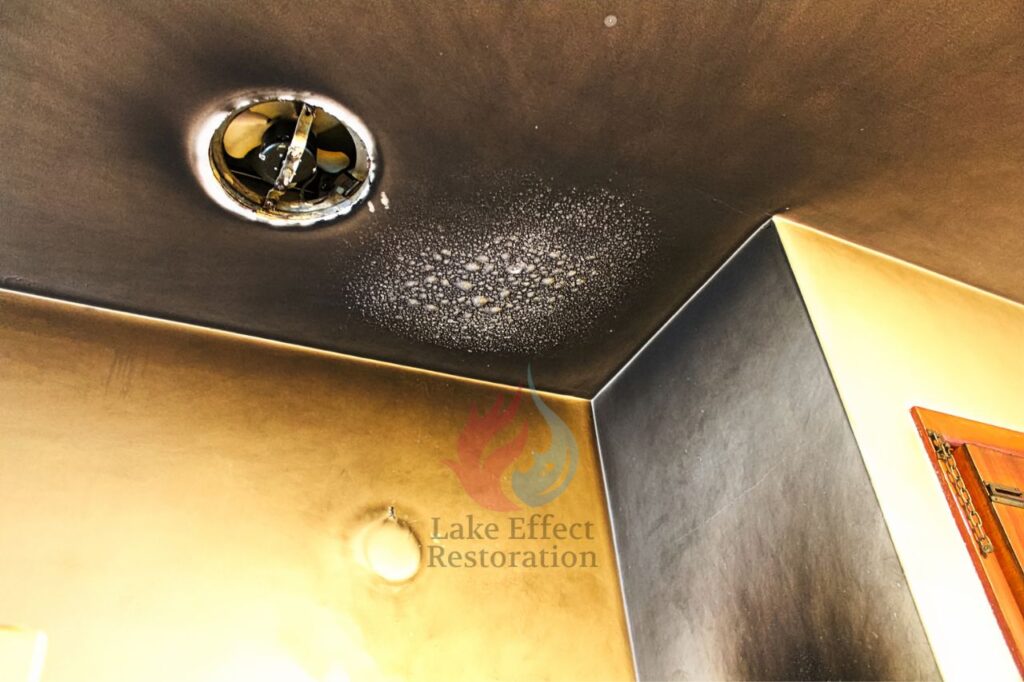Restoring a home after it’s stricken by a fire event can be a challenging undertaking. Not only are you dealing with the physical aftermath of destruction, but you’re also grappling with the financial implications of the restoration process. In this article, we will unpack the nuances of fire damage restoration costs in 2023.
Delving into the Impact of Fire Damage
Fire damage brings with it a wide spectrum of potential issues, from minor surface damage to severe structural damage. Whether it’s a minor or major fire event, the cost of fire damage cleanup and restoration can differ significantly.
On average, restoring a house after a fire, to the point it’s safe to occupy again, can set homeowners back around $12,900. However, this figure isn’t fixed and can fluctuate drastically. In some instances, restoration for minor fires might only cost around $1,200. However, if extensive damage has occurred, like in a full-scale kitchen fire, or where the roof needs replacement, this figure could surface to around $72,300.
With such a vast range in potential costs, it’s imperative to comprehend the degree and type of damage that has occurred to your property. Emergency restoration can be quite costly; however, it plays a crucial role in making your property habitable once again.
Unpacking Fire Damage Restoration Costs
If you’re looking to grasp a deeper understanding of fire damage restoration costs in 2023, you must account for several key factors.
# Costs by Damage Type
Fire damage restoration often involves addressing a multitude of issues simultaneously. These tasks might include deodorizing fabrics soaked in soot, removing items beyond repair, repairing damage to HVAC systems, and drying out water used to extinguish the fire. Each of these tasks has individual costs associated with them.
Here’s how the average costs for different types of fire damage restoration might look:
- Smoke Damage: Generally, cleaning up smoke damage might cost between $200 – $900.
- Water Damage: Addressing water damage tends to range from about $1,000 – $4,600.
- Soot Removal: This comes in at an average of about $1,400 – $4,700.
- Item Removal: This usually costs between $55 – $80 per pound of material.
- Furniture Deodorization: This can cost around $600 – $2,000.
- Duct Cleaning: Cleaning air ducts after a fire generally costs from $200 – $500.
- Ozone Treatment: On average, this costs about $200 – $500 per floor.
- Thermal Fogging: This process tends to cost between $200 – $600 per floor.
# Costs Per Square Foot
Professional restoration services often use the square footage of your home to provide an accurate quote. On average, fire restoration costs in 2023 per square foot came to about $4.25 – $6.
Here’s an illustration of how potential restoration costs might look given different house sizes:
- A 1,000 sq ft home: Around $4,250 – $6,000.
- A 2,500 sq ft home: Approximately $10,625 – $15,000.
- For homes exceeding 4,000 sq ft: Restoration costs can escalate to anywhere from $17,000 – $24,000.
# Other Cost Influencers
Other variables can significantly impact the total cost of a fire damage restoration project. Here are a few points to take into account:
- Type of Fire: Different types of fires will have varying restoration needs and costs.
- Post-cleanup Repairs: After cleanup, you might need additional repairs or rebuilding, which may incur further costs.
- Fire Suppression Upgrades: After experiencing a house fire, you might want to invest in more effective fire suppression methods.
- Geographical Location: Where you’re located in the US can significantly influence costs due to different local rates for materials, labor, and taxes.
- Chemical Damage Restoration: This tends to range from $600 – $2,000.
- Permit and Inspection Fees: Depending on where your home is, city permits and inspections may have specific fees attached.
Dealing with Insurance
Most homeowners insurance policies cover fire damage cleanup and restoration to some extent. However, it’s best to contact your insurance provider immediately after a fire event to prevent any delays in the processing of your claim.
DIY vs. Hiring a Pro
Whilst doing restoration work yourself might seem enticing from a cost-saving perspective, it’s generally best to hire professionals. They’ll have the necessary knowledge, tools, and experience to make sure the job is done swiftly and effectively. However. when looking to hire a fire damage restoration professional, don’t forgat to ask the following questions,
1. Do you guarantee your work?
2. Are you fully licensed and certified?
3. How long have you been in business?
4. Do you handle insurance claims?
5. Do you provide turnkey services?
6. Can you commence work immediately?
7. Can you provide references or reviews?
In conclusion, understanding the complexity and cost of fire damage restoration is vital to navigate this challenging situation. Be sure to understand the extent and type of damage your property has sustained, consider the factors we’ve outlined in this guide, and don’t forget to ask the right questions when hiring professionals.
Remember, all prices listed in this guide may vary depending on specific circumstances and are subject to change. Always consult with professionals and obtain tailored quotes for more accurate pricing.

